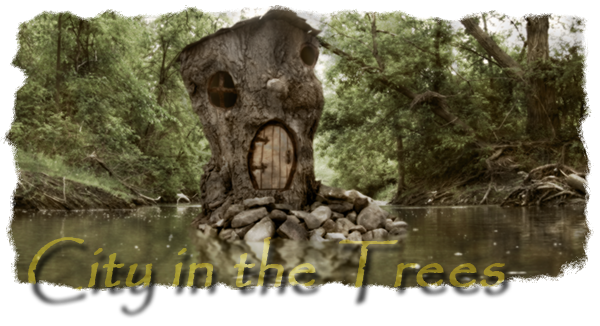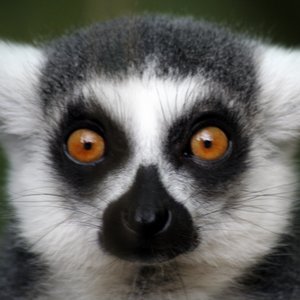The show largely centred around a group of anthropomorphic panther kids; a club who collectively called themselves The Rainbow Panthers, for obvious reasons, seen above.
As another delta, several of the male characters are shown here with whiskers sprouting from their upper lips, as the Pink Panther himself has (namely his two sons at the left, Pinky and Panky, and Punkin down at the end). These were omitted when the show aired; probably because it was decided they made the characters look older than they were intended to be.
As their typical collective antagonists were a crew of lions; a bike (as in bicycle) gang called The Howl's Angels. Somewhat incongruently, the gang's undisputed leader was called Finko, with Howl as basically his toadying second-in-command. Pinky and Panky are included here to provide a scale key between the two sets of characters.
The show's most central character was the Pink Panther's son, Pinky. (It's worth noting here that while the Pink Panther made occasional, voiceless cameos on the show, no mother for his sons was ever shown or even mentioned.) Pinky was the unofficial leader of the Rainbow Panthers and shown to be a rather average kid... a reasonable athlete, a good-natured friend, a brave but not foolhardy kid who did what was necessary. Ages were never stated but he came across as slightly older than the other kids in his gang, or at least, more mature. As I noted above, the visible whiskers vanished from the design by the time the show was animated.
The other eponymous "son" was Panky, who was a toddler with a very basic grasp of language. He actually did very little in the course of the show, though a couple of episodes centred around him... mainly as a plot device, though, for action on the part of the older characters. When he was given the spotlight, he was portrayed as full of wonder at the world, and rather stubborn. One of the changes made to his design was the addition of a bright yellow shirt (which can be seen in the colour key image at the start of the blog entry). Perhaps they thought just wearing a diaper made him look too naked... rather ironic, given his older brother and most of their friends didn't even wear pants.
One of the two female characters in the gang was Chatta, a bookish know-it-all who delighted in using big words and circuitous language. She was portrayed as having a bit of a crush on Pinky, which was, to some extent, requited; they were shown to be dating casually in a few episodes.
Another interesting delta here... The other female panther, shown below, is depicted as named "Gizmo". By the time the show aired, that had been changed to Annie, with Gizmo having morphed to her last name, "O'Gizmo". She was the only character whose last name was given on the show, other than Pinky and Panky, whose last name was, of course, "Panther". Annie was a young genius inventor who got mixed results... some of her inventions worked just fine; others were considerable flops. She was, at the time, probably my second favourite character on the show. I think, by now, I'd probably call her my favourite. She had a definite personality that was shown as a little deeper than most of the others. She seemed to associate slightly more with Punkin than she did anyone else, but given there were only 26 episodes across 13 shows, that might simply be a result of the relatively low sample size.
Speaking of Punkin, here he is. At the time I started catching the show, he was the hook for me. I loved the design and the kind of vulnerability of the character. He was depicted as just a little bit dumber than most of the others, and given the verbal tick of recurring spoonerisms, nearly every time he spoke. He was my favourite character back in the day, but in retrospect, there really wasn't much to hook onto aside from the visual appeal of the design, and as I said above, I'd probably have to say Annie's moved into my #1 slot since then.
Sorry, Punkin. :)
Probably my least-favourite character was Murfel. He had a speech impediment that made him largely unintelligible for the most part, and whenever he spoke it was typical for one of the other characters to repeat his line after saying something like, "You said it, Murfel;" blah blah blah. He was slow, uninteresting, and clearly an almost direct lift of Mushmouth from the Cosby Kids. I never saw the need for the character except to make the group slightly bigger and have a character whose pelt was green.
Rounding out the Rainbow Panthers was Rocko, shown here as having what I suppose is the nickname "13", though he was never called that on the show. He wore the number on his shirt, but that was far as that went. Rocko was obsessed with boxing and spoke with what I suppose was a stereotypical Bronx accent. The show depicted him somewhat unevenly as being alternately bold, as one would expect of someone self-confident of his ability to defend himself; and then inexplicably cowardly. I tended to head cannon his boldness and discount the cowardly version; it made him more interesting, because he didn't have much else.
Now we come to their usual antagonists, the Howl's Angels, a gang of lions. While the kids of the two gangs were generally shown as rivals, they were not above being cordial and social on occasion, with the Howl's Angels' female character, Liona, though herself hard-bitten, shown to be rather friendly with Pinky in particular, and kind to other characters when she felt the Angels were going too far in picking on them.
First, their leader, Finko. He was, as you might expect, loud, blustery, selfish, arrogant, violent to subordinates, kind of dumb, and possibly the singularly most interesting character on the show.
Next, his 2IC, Howl, the head of the bicycle gang, who, for some reason, all wore various cooking utensils on their heads; these being plucked from the junkyard where they maintained their clubhouse. Howl was voiced by Marshall Efron, the only character on the show whose voice actor I could personally identify. He was, in most regards, a subordinate echo of Finko.
And lastly, Liona, the only thing that gave the Angels any touch of class or heart at all. She was shown to be romantically interested in Pinky, and was shown on at least one occasion to go on a date with him, and so was at least an ostensible rival to Chatta for Pinky's attentions. She was an odd fit for the Angels as she seemed to have no romantic interest in either Finko or Howl, and freely criticized them. She tended to be what little voice of reason the gang had.
The show only lasted the one season and didn't seem to generate much buzz, but I took it to heart and managed to video tape all the episodes, aside from the first five minutes or so of one. Once the show went off the air at the end of the season, I don't remember ever seeing it re-run. It had some interesting quirks... the panthers and lions seemed to be the only anthropomorphic species but were shown to be completely accepted by, and at home with, the human characters who made up most of the population. The show was never stated to be in Los Angeles, but given that Tommy Lasorda, "manager of the Ducksters", had a cameo in one of the episodes, it would be hard to imagine it was set anywhere else. Episodes ran about ten minutes or so, two to the half hour, and tended to focus around the problems of one character or another to be solved by the gang's cooperation. On the whole, they come and go so quickly it's hard to become bored; the writing was usually bright and amusing; and since the episodes were so brief and the cast of characters so broad, none of them got enough exposure to wear out his/her welcome, with the possible exception of Murfel. To the best of my knowledge, the show was never released on video or DVD by Hanna-Barbera, but if you're interested, a number of the episodes in surprisingly high quality (so good I'm left wondering if the show has been remastered and released in a digital format) have been recently posted on YouTube. They're quick, fun, and still enjoyable, and now provide an interesting look at tweener childhood back in the 1980s, a world of video games and walkmans but not yet one of the internet or smartphones. Have a look... Here's the theme song, and a couple of the episodes I happened to particularly like.


1 comment:
Its so nice to see that this show now has some better quality episodes posted now. I'd like to know where they got these. And you having these scans of character ref sheets is incredible. I didn't think this show would get a second chance like this what with a bunch of crummy VHS rips that were on YouTube in the past. One of my favorite characters on this show is Panky. I just love baby characters like him in cartoons, especially where he has the cute and funny gimmick of constantly having to hold his diaper up from falling. You just don't see that kind of thing a lot in cartoons nowadays.
Post a Comment